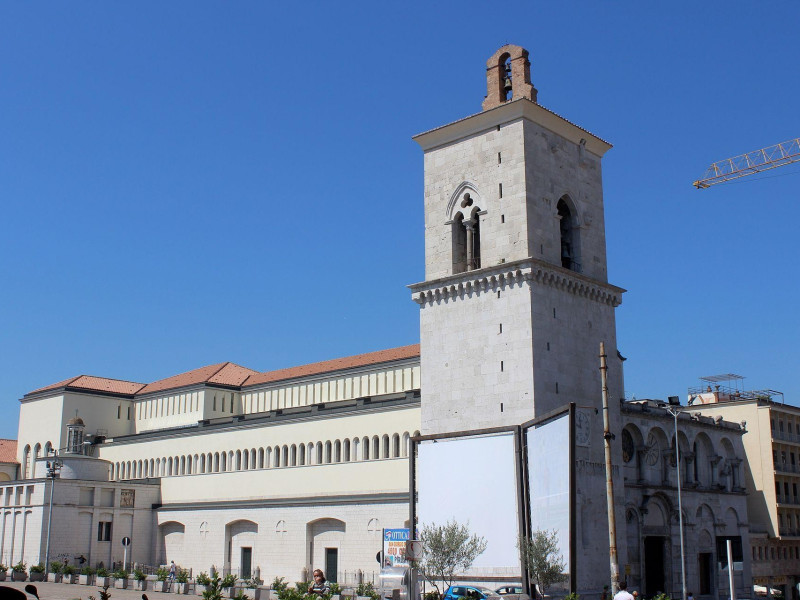Cattedrale Metropolitana di Santa Maria de Episcopio
The Cathedral, dedicated to Sancta Maria de Episcopio, is Episcopalian vanue of homonymous metropolitan archdiocese. The original building stood at the center of the ancient Roman city. The first foundation of the building dates back to the seventh century, although its current appearance is the result of the rebuilding of the eighth century, by the Duke Arechi II, and subsequent rearrangements: plant with five naves, with a spacious sanctuary, decorated with special sculptures, marble and bronze friezes. The facade and bell tower, the main elements of the ancient Cathedral, dating back to XIII: the first, in white marble, is on two orders in six arches and has a portal enclosed in a richly decorated lintel and doorposts; the bell tower, in blocks of white stone, has four facades decorated with Roman friezes, inscriptions and reliefs, while resting on a ledge arches separates the belfry from the body. In the following century, the interior is enriched with artistic gems. The Baroque decorative elements, in particular the coffered ceiling, are introduced after the damage of the earthquake of the fifteenth century, and subsequent telluric events (1688 and 1702). The Cathedral was destroyed by the Americans in September 1943, and rebuilt by architect Paolo Rossi De Paoli. The work of restoration and enhancement, concluded in 2012, have brought to light several archaeological finds dating back to the late Roman period, made accessible to visitors. The interior, all dating to the reconstruction of the twentieth century, is severe and bright, a Latin cross. It is accessed through a vestibule with right baptistery and, on the opposite side, the large marble statue of St. Bartholomew the Apostle, by Nicola da Monteforte (XIV century). After the seventh span, lateral naves halve their width in favor of the central one, which ends with the great triumphal arch adorned with the mosaic by Elena Schiavi. The presbytery, covered in yellow marble, is dominated by the solemn canopied altar. The materials saved from the ancient Cathedral were reused in the Chapel of SS. Sacramento (left aisle): eighteen ancient columns in white marble with Doric capitals that hold the entablature of the dome, decorated with reliefs by Valerio De Corsent.




